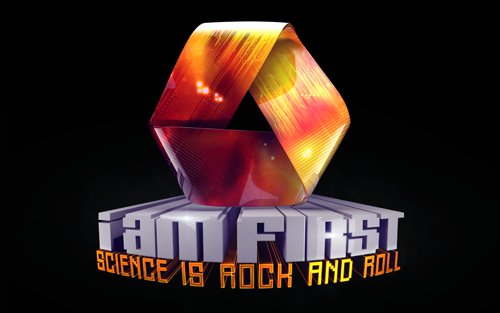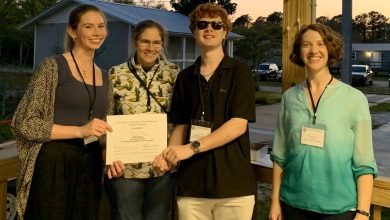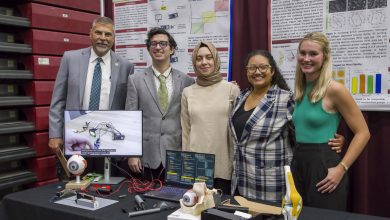Science is the New Rock and Roll
(Photo credit: Clizbeats.com)
Back in high school, everyone always seemed to imply that once you had chosen your major for college, your life was set and everything would be a straight shot from there. But then college comes and such sentences as “I want to be an engineer” or “I want to be a physicist” become almost laughable. “Engineer” or “physicist” doesn’t even begin to describe the world of possible subjects there are to choose from, and it can all be a little overwhelming at times. I bet many of us have had doubts about whether the subject matter covered in the classroom can really help us make a difference in the world. What if we are wasting our time and money going to college for years on end, only to graduate and find we haven’t learning anything important?
NASA can help students realize that what they are learning is important, and they have created a new website just for that purpose. “Inspire/Connect/Explore (ICE): Your Home for STEM&M Inspiration” can be found at http://ice3.ksc.nasa.gov/; it is a website designed to encourage students entering into Science, Technology, Engineering, Mathematics & More by showing where some Kennedy Space Center (KSC) employees started out and how far they have come since then.
Because of Florida Tech’s connection with NASA, I was able to talk to NASA employee and FIT alum, Trent Smith. Below is a transcription of our interview:
1) What degrees did you receive from FIT?
Bachelor’s in Chemistry and Master’s in Chemistry
2) What class or experience from FIT was the most beneficial to getting you where you are today?
Being able to do actual research with grad students and professors. I did research with Dr. Sharma on iron-6, research with Dr. Baum on a molecular sensor and research with Dr. Nelson in grad school, as well. The undergraduate research was a good introduction to what grad school would be like, and grad school likewise taught me how to work in a lab, how to develop and run an experiment and how to take and record accurate data. I also really enjoyed how the required labs usually followed along with the lecture material rather well.
3) Who was your favorite professor?
Dr. Baum. He was always willing to help students—you could tell he really cared about how his students were doing. But he would try and help you get to the answer yourself rather than just giving it to you, which was very helpful in learning how to solve problems myself. He also wasn’t afraid to say “I don’t know” to a question, but he would research it for you and always come back with an answer.
4) What extracurricular activities were you involved in at FIT?
I was president of the American Chemical Society (ACS). The most memorable experience there was helping Dr. Baloga with LASER Day. We would set up presentations involving exploding balloons or liquid nitrogen.
5) What have you been doing for NASA since graduating?
I started work at NASA as a polymer chemist, where I got to make new materials, collaborate with some prominent scientists and publish several articles. I worked there for 6-7 years. I became the vehicle processing engineer for the building of the Ares I-X rocket, which means I coordinated with all the teams to make sure everyone did what they were supposed to and dealt with problems as they arose. I learned a lot about managing operations from that project. I also managed the project for the transfer from the Shuttle program to the Constellation program.
At one point I was moved to Washington, D.C., to work under a couple different senators. I was the technical advisor for their senior space advisor and was in charge of organization, keeping records, making memorandums, etc.
After that I worked with the Commercial Crew program for about a year and a half. I was mainly there to guide the team on what to expect and how to handle various perceptions. By this time, though, I was really hoping to get back into some more technical work, especially something that would keep me close to home so I could be with my family; I have a six year old and a soon-to-be four year old. These previous jobs had me moving around a lot. So I was pleased when I got to work with the International Space Station payloads right here at Kennedy. I work a lot with the BRIC program, Biological Research in a Canister. Experiments are put inside canisters and sent to the ISS to try and discover the long-term effects microgravity has on biology. Experiments and payloads range from growing whole plants inside the canister to “petri science.” We hope to discover biological and genetic changes that may result from less gravity.
To promote their new website, NASA also made a YouTube video from their NASA FIRST robotics competition, which is basically a bunch of Hollywood celebrities saying how cool they think science is. I thought it was a very interesting video, and I encourage you all to check it out at the website mentioned above. Below are some of my favorite quotes from it, just to give you an idea of what the celebs are talking about in the video:
“A lot of people think celebs are exciting, that show biz is amazing. Show biz ain’t nothing compared to science.”
“Geeks and nerds are the coolest people on the planet. You dig in your pocket right now, and get your iPhone, your Blackberry; that wasn’t made by nobody from the Rolling Stones.”
“Scientists, mathematicians, engineers, programmers – that is the new rock and roll.”







I really wish to pursue a career at Florida tech on aerospace Engineering.
I really want some guidance or help.Mail me at anzjoy100@gmail.com